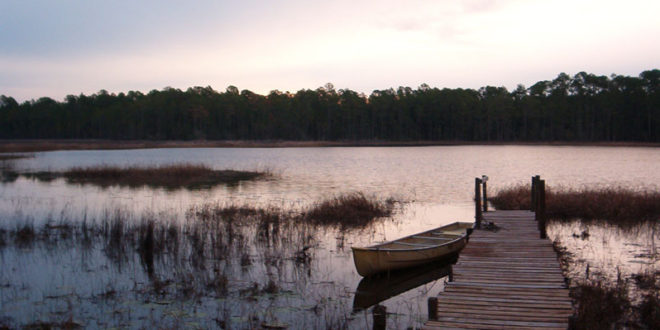By Dr. A. Quinton White
While we have not set any records for hottest days this summer, at least not yet, it sure seems like we have had a very long spell of days with temperatures over 90 degrees. The recent weather patterns have had an almost continuous flow of moisture coming from the Gulf of Mexico to fuel afternoon thunderstorms. Rainfall is about a third higher than normal with our annual average year to date expected to be 26.6 inches, but we have exceeded that by over 9 inches.
So what does that mean for life in the St. Johns River?
For one thing, the water is very warm, consistently in the mid to high 80’s. And the salinity, or amount of salt in the river, continues to be low with relatively fresh water flowing into the river from all the rain. Hurricane Irma had dropped the salinity in the river significantly and the above average rainfall has maintained that fresher condition.
Higher temperatures also means that the amount of dissolved oxygen is low. There is an inverse relationship between temperature and dissolved gases. The higher the temperature, the less gas that can be dissolved in solution.
Think about a cold soda versus a warm one, and the amount of carbonation that bubbles out. Therefore, the aquatic life in the river is coping with warmer temperatures and less oxygen.
The other major problem has been the amount of nutrients that are washing into the river. We talk about excessive fertilizer flowing into our river, but many of these nutrients are coming from things like grass clippings, leaves and other organic debris that move into our storm drains and eventually into the river. When we blow lawn debris into the street, we are contributing to the excessive nutrients in the river. While it is true that sewage discharge into the river, and upland disposal of wastewater treatment sludge, or bio-solids, contribute to the excessive nutrients, those are not something we can control as individuals. However, we can limit our use of lawn fertilizer and not blow grass clippings into the street.
It is this combination of very warm, fresh and nutrient rich water that leads to the ideal conditions for algae blooms. Now algae are present in our waterways all the time. But their numbers are held in check by limiting factors. These factors might be a specific nutrient not being present in sufficient quantities, but rather in very small amounts that limit growth. Or it could be the cooler temperature or amount of sunlight.
When we expose the algae to warmer conditions and lots of available sunlight, then add lots of nutrients, we have the ideal conditions for the algae to grow and multiply. This is what is termed a “bloom” where the numbers of algae grows exponentially. In some cases, the number of cells rapidly double, then double again, and again, in a relatively short period of time….you get the idea.
The water turns green, brown, or red, depending on the organism. Hence the Green Monster or Red Tide that occurs periodically in our water bodies. Moreover, this is not just a local problem but a worldwide phenomenon.
We began experiencing a blue-green algae bloom in the upper reaches, or headwaters, of the St. Johns River earlier this year and now the algae has arrived in the lower basin. While the individual organisms are very small, requiring a microscope to see, when present in large numbers, they can clump together and be seen by the unaided eye.
They also color the water green. The algae is very susceptible to the wind and tends to be concentrated along the shoreline according to the prevailing wind.
We all need to try to do our part in limiting nutrients flowing into the river. You may not think you make a difference, but you do. It is only by working together that we can have a healthy river.
Glad you asked River Life.
When we have an algae bloom in the St. Johns River, is it safe to eat fish, shrimp and crabs taken from the river? You should look to see if there is a public health advisory issued for the river. In general, it is better to be safe than sorry and avoid eating seafood from the river until after the bloom has subsided. But other seafood, not caught in the river, is a delicious alternative.

River Life is a recurring feature in The Florida Times-Union. E-mail Dr. White, Executive Director of the Jacksonville University Marine Science Research Institute, with questions about local waterways at qwhite@ju.edu.
 Wave Magazine Online Jacksonville University News Hub
Wave Magazine Online Jacksonville University News Hub
